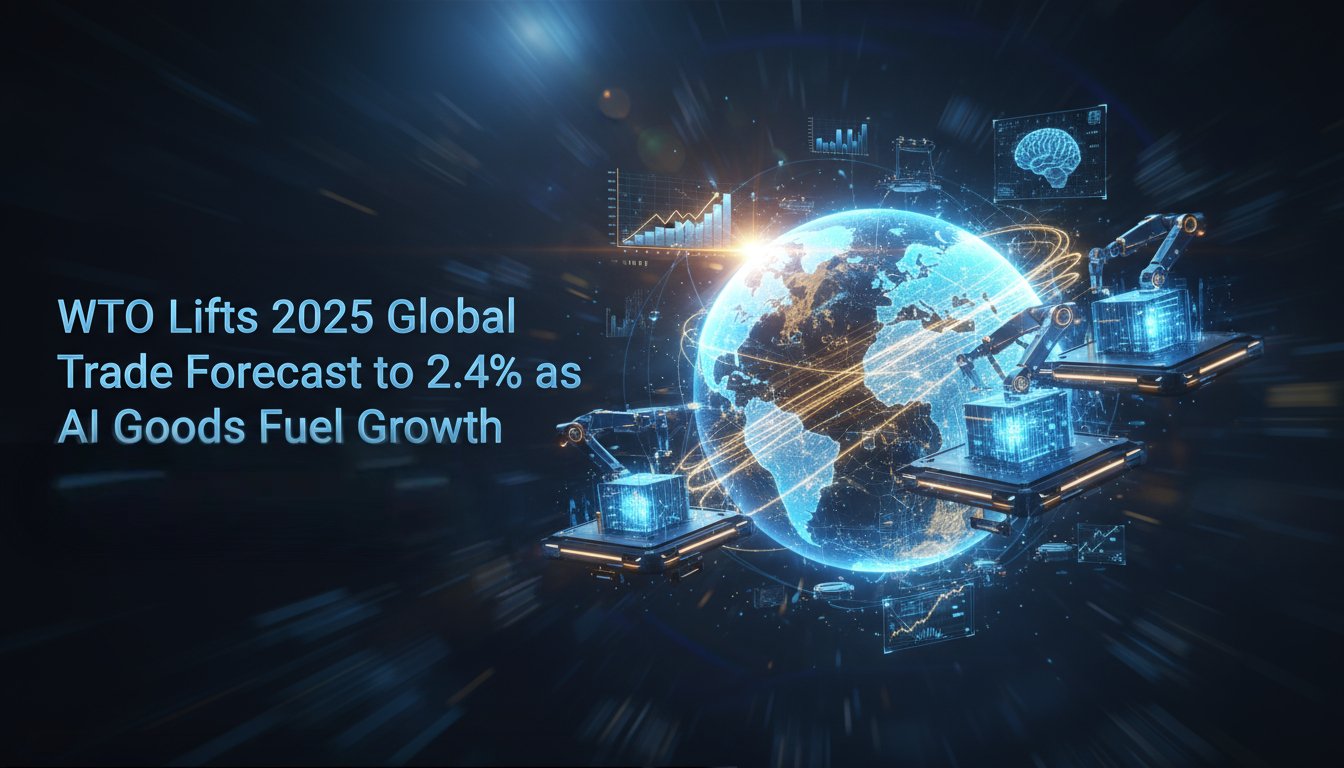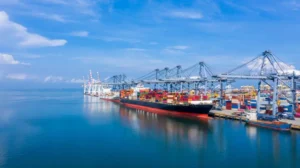
Trade Rebounds: What’s Powering the Global Comeback?
The world economy just got a small but powerful confidence boost. The World Trade Organization (WTO) has raised its forecast for global merchandise trade growth to 2.4% in 2025, up sharply from its earlier estimate of 0.9%.
In a year where trade tension and tariff talks dominate headlines, this unexpected uptick points to a surprising hero behind the numbers AI-related goods.
According to the WTO’s Global Trade Outlook and Statistics Report, the value of AI-linked products like semiconductors, servers, and telecom gear surged 20% year-on-year, accounting for nearly half of global trade growth in the first half of 2025.
“Despite stiff headwinds from unilateral actions and rising trade uncertainty, trade has shown remarkable resilience,” said WTO Director-General Ngozi Okonjo-Iweala during the press briefing.
AI, Emerging Markets, and a Trade Revival

Several forces are driving this rebound in global trade momentum:
- AI-fueled exports: The global boom in AI hardware is driving demand for semiconductors, chips, and cloud infrastructure.
- Emerging market momentum: Developing economies are stepping up. South-South trade grew 8% year-on-year, outpacing global averages.
- Fiscal support: Disinflation and policy stimulus in key markets like India, Indonesia, and Brazil have kept growth steady.
- Import frontloading: North America’s import surge ahead of new U.S. tariffs added short-term trade volume.
These factors, the WTO said, helped world merchandise trade volumes expand 4.9% in the first half of 2025 — a significant turnaround from the sluggish performance seen in 2024.
Regional Winners and Losers: Asia Takes the Lead
Not every region is sharing the same trade high.
Here’s how the outlook stacks up:
- 📈 Asia & Africa: Expected to record the fastest export growth in 2025.
- 📉 Europe: Projected to slow, mainly due to weaker industrial output and lingering inflation.
- ⬇️ North America: Could see declining exports, weighed down by protectionist policies.
Asia’s strength, according to the report, lies in its manufacturing depth and digital export surge, particularly from China, South Korea, and Malaysia’s fast-growing semiconductor industry.
The Downside: Trade Restrictions & Inflation Loom
Still, the WTO warned that rising trade restrictions could derail the fragile recovery.
If tariffs continue to spread across more sectors, the result could be slower shipments, higher import prices, and a renewed wave of inflation by the end of 2025.
“There’s a core in the multilateral trading system that continues to work well,” Okonjo-Iweala emphasized. “But it’s under real pressure.”
In particular, the WTO pointed out that declining inventories in tariff-hit industries might amplify inflationary risks heading into 2026.


